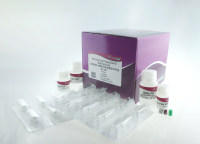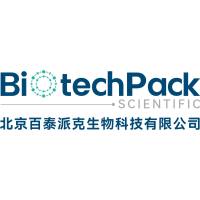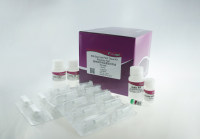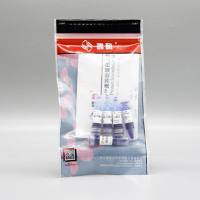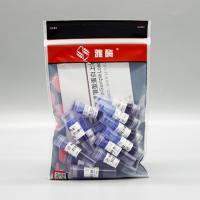Quick and Easy TRAFO Protocol
互联网
This Protocol allows for TRAFO with any Yeast cell source
When just a few transformants are sufficient, such as the transformation of a test plasmid or a GAL4BD fusion plasmid, the following protocol can be used. This procedure is very flexible and can be applied to yeast cells from a number of different sources; however, for best results, use cells from a freshly grown plate.
Rapid Transformation Protocol
Day 1
1. Inoculate the yeast strain in a 2 cm2 patch onto YPAD agar (YPD 12 supplemented with 100 mg adenine hemisulphate per liter) and incubate overnight at 30C. Alternatively, the yeast strain can be inoculated into 5 ml of liquid medium (2x YPAD or SC selection medium and incubated on a shaker at 30C and 200 rpm.
Day 2
1. Heat a tube of carrier DNA in a boiling water bath for 5 min and then chill in ice/water.
2. Scrape a 50 ml blob of yeast from the YPAD plate and suspend the cells in 1 ml of sterile water in a 1.5 ml microcentrifuge tube. The suspension will contain about 5 x 108 cells. Cells grown overnight in 2x YPAD broth will reach a titer between 1 and 2 x 108 /ml; the titer in SC medium will be about 5 x 107 /ml. Harvest 2 ml of a YPAD culture and 5 ml of a SC culture. Note: cells in log phase growth on agar or in liquid medium will transform with high efficiency.
3. Pellet the cells at top speed in a microcentrifuge for 30 sec and discard the supernatant.
4.
|
<center> <font><font><font><font><font><font><font><font><font><font> <b>Component</b> </font> </font> </font></font></font></font></font></font></font></font></center> |
<center> <font><font><font><font><font><font><font><font><font><font> <b> Volume (µl)</b> </font> </font> </font></font></font></font></font></font></font></font></center> |
| 1. PEG 3500 50% w/v |
<center> <font><font><font><font><font><font><font><font><font><font> <b> 240 µl</b> </font> </font> </font></font></font></font></font></font></font></font></center> |
| 2. LiAc 1.0 M |
<center> <font><font><font><font><font><font><font><font><font><font> <b>36 µl</b> </font> </font> </font></font></font></font></font></font></font></font></center> |
| 3. Boiled SS-Carrier DNA (2 mg/ml) |
<center> <font><font><font><font><font><font><font><font><font><font> <b>50 µl</b> </font> </font> </font></font></font></font></font></font></font></font></center> |
| 4. Plasmid DNA (0.1 to 1 µg) plus water |
<center> <font><font><font><font><font><font><font><font><font><font> <b>34 µl</b> </font> </font> </font></font></font></font></font></font></font></font></center> |
| Total Volume |
<center> <font><font><font><font><font><font><font><font><font><font> <b>360 µl</b> </font> </font> </font></font></font></font></font></font></font></font></center> |
Be sure to vortex mix the carrier DNA before pipetting it.
5. Incubate the tube in a water bath at 42°C for 40 to 60 min. Many laboratory strains will yield up to 1 x 105 transformants/mg plasmid after 60 min incubation. Extending the time at 42°C to 180 min increases the yield to > 1 x 106 /µg with some strains.
6. Microcentrifuge at top speed for 30 sec and remove the Transformation Mix with a micropipettor.
7. Pipette 1.0 ml of sterile water into the tube and resuspend the cells by stirring with a micropipette tip and then vortex mixing vigorously.
8. Pipette 10 and 100 µl samples onto plates of appropriate SC selection medium, incubate at 30°C for 3-4 days and isolate transformants. The 10 µl samples should be pipetted into 100 µl puddles of sterile water.
This protocol can be used with cultures that have been stored at room temperature or in a refrigerator. The yield will be reduced with older cultures but will generally be sufficient to isolate a number of transformants of the desired genotype.


